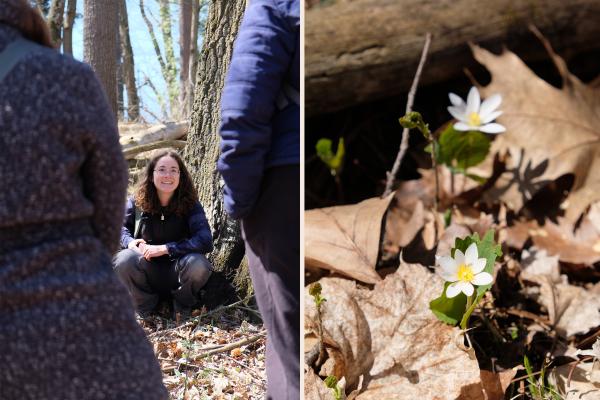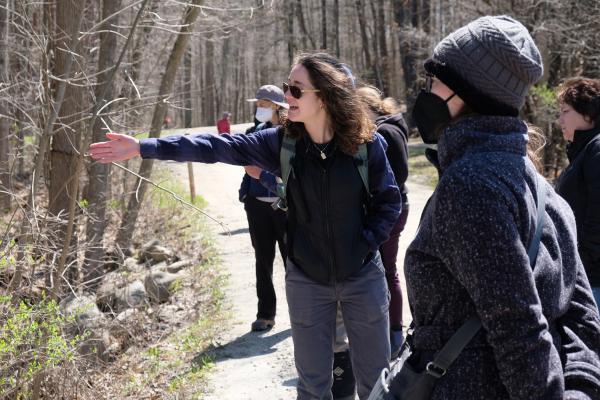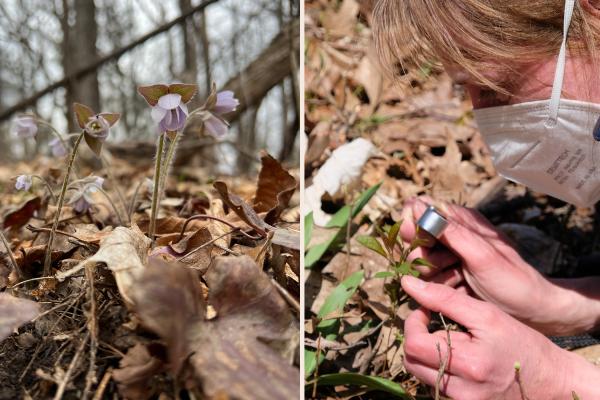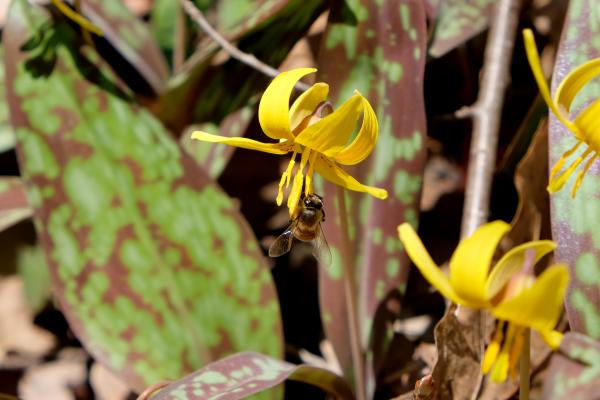Vermont’s Extraordinary Spring Ephemerals
Discovering the adaptations of our resilient early wildflowers
In late April, educator and UVM Field Naturalist Hayley Kolding led a spring ephemerals walk at Shelburne Farms. Here, Hayley shares a few things to consider as you discover these fleeting natural wonders, at the farm or in your own backyard.
There’s another idea, called the vernal dam hypothesis, “that soil nutrients are heavily leached into waterways during the spring melt and subsequent rains. When spring ephemerals are present, they act as nutrient sinks, taking up much of the nutrients that would otherwise be lost,” writes ecologist Matt Candeias. As ephemerals complete their growing cycle, they send those nutrients back into the soil, explains Hayley, when other plants are ready to take it up.
“We know how important preserving large, intact, connected blocks of forest is for wildlife to travel, feed, and reproduce,” says Hayley. “But what people might not know is that forest habitats are important for flowers, too.”
Bloodroot is one of the earliest flowers to bloom, but if it’s too cold, pollinators may not be in the air. So, bloodroot can fertilize itself (called autogamy). Something else fantastic about this plant, adds Hayley, is that although bloodroot’s delicate white flowers fade quickly, the uniquely shaped leaf will remain and can be seen long into spring. “Bloodroot also wraps its leaves around its stem and bud to shroud them from frost.”
Another is trout lily, whose beautiful red speckled leaves resemble trout underwater. The plant produces a stolon, a modified stem “that arches up like a croquet wicket,” describes Hayley, “with a little white bulb at the end called a ‘dropper.’” That dropper, with assistance from gravity, pulls the stolon back into the soil to re-root. By early June, the stolon will be the only trace of lily left.
The flower hepatica has an adaptation that will sound familiar: it’s covered in fuzz. “As strange and amazing as it sounds, hairs on stems, leaves, and buds give many early spring wildflowers an insulating advantage in colder weather, just like the hairs on our own body,” says Hayley.
And then there are the other early pollinators: bees. “We have over 300 species of bee in Vermont,” says Hayley (several of which we spotted on our walk on the farm). “Some burrow in sand, others live in hollow twigs and brush. Keeping our yards messy into the spring is a really beautiful way to preserve the native pollinators that in turn pollinate these flowers we love so much.” If you have a backyard garden, says Hayley, leave shrubs, dead wood, bundles of stems and twigs, as well as bands of exposed sand or soil, as microhabitats for these early fliers.
“Even to see just one early pollinator out in action on the flowers feels good, but to see quite a few, it makes me feel hopeful that people will continue to recognize these wild pollinators as equally if not more important than the livestock honeybee. We should all be thinking about how can we make the landscape suitable for these unsung heroes?”
For even more information about ID-ing Vermont wildflowers in spring, check out this guide from the Vermont Land Trust. We hope you’ll explore your own backyard or neighborhood natural area in search of these and other spring ephemerals.
Head to our calendar for upcoming opportunities to learn on our campus. For more ways to learn with Hayley Kolding, visit her website.




